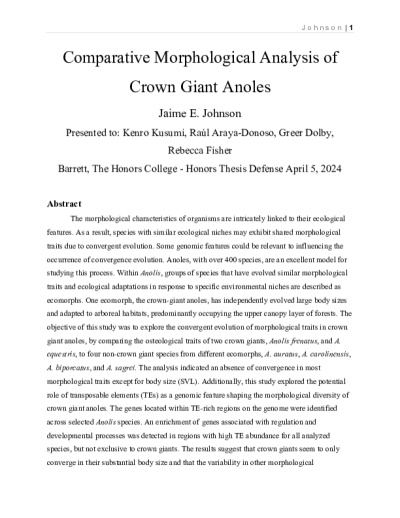Barrett, The Honors College Thesis/Creative Project Collection
Barrett, The Honors College at Arizona State University proudly showcases the work of undergraduate honors students by sharing this collection exclusively with the ASU community.
Barrett accepts high performing, academically engaged undergraduate students and works with them in collaboration with all of the other academic units at Arizona State University. All Barrett students complete a thesis or creative project which is an opportunity to explore an intellectual interest and produce an original piece of scholarly research. The thesis or creative project is supervised and defended in front of a faculty committee. Students are able to engage with professors who are nationally recognized in their fields and committed to working with honors students. Completing a Barrett thesis or creative project is an opportunity for undergraduate honors students to contribute to the ASU academic community in a meaningful way.
Filtering by
- Creators: School of Life Sciences



Our bodies are constantly fighting off viral pathogens both with our external barriers such as skin as well as internally through the immune system. Mucin genes specifically Muc5AC and Muc5B help assist in this process by activating both bacterial and mucus pathogenesis. Their gene expression is correlated with temperature meaning that in warmer temperatures they have decreased expression. Developing a better understanding of their functionality as well as their expression can help species that are in danger of becoming extinct.

Heat shock factors (HSFs) are transcriptional regulators that play a crucial role in the cellular response to environmental stress, particularly heat stress. Understanding the evolution of HSFs can provide insights into the adaptation of organisms to their changing environments. This project explored the evolution of HSFs within tetrapods, a group of animals that includes amphibians, reptiles, turtles, and mammals. Through an analysis of the available genomic data and subsequent genomic methodologies, HSFs have undergone significant changes throughout tetrapod evolution, as evidenced by loss events observed in protein sequences of the species under examination. Moreover, several conserved and divergent regions within HSF proteins were identified, which may reflect functional differences between HSFs in different tetrapod lineages. Our findings suggest that the evolution of HSFs has contributed to the adaptation of tetrapods to their diverse environments and that further research on the functional and regulatory differences between HSFs may provide a better understanding of how organisms cope with stress in heat-stressed environments.


